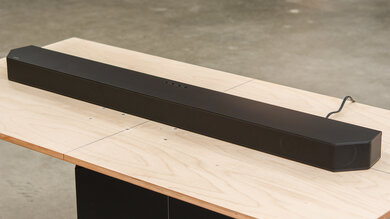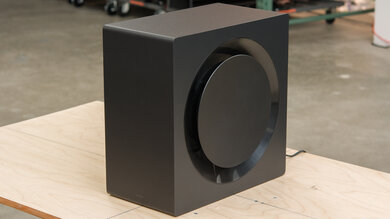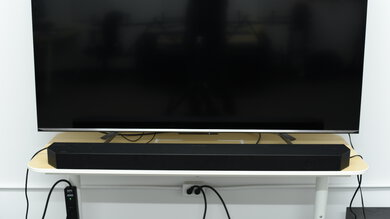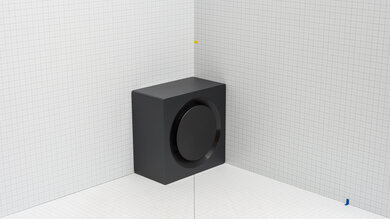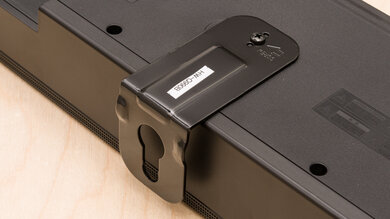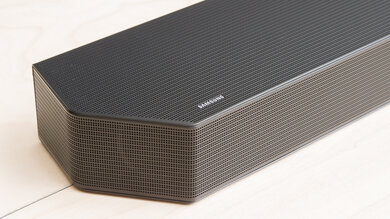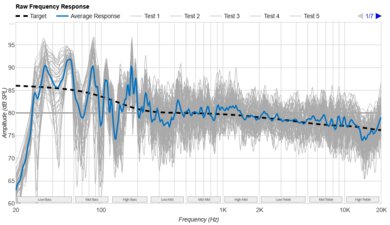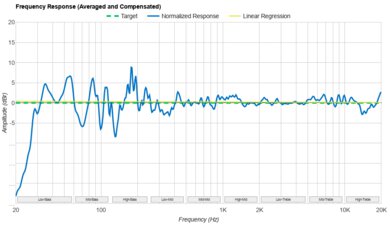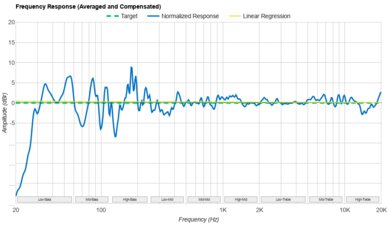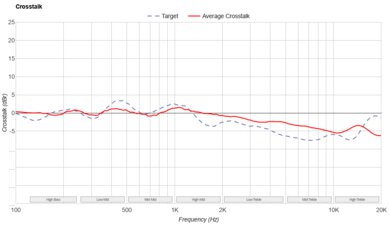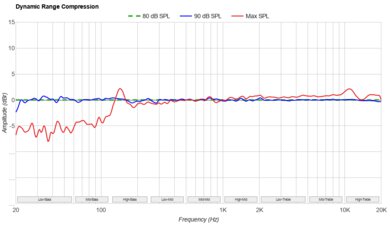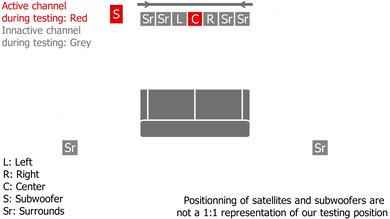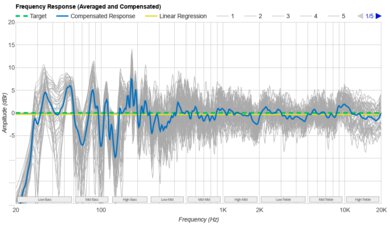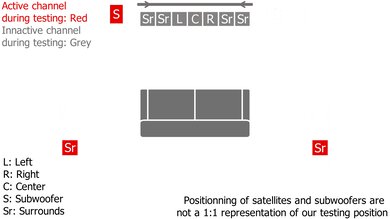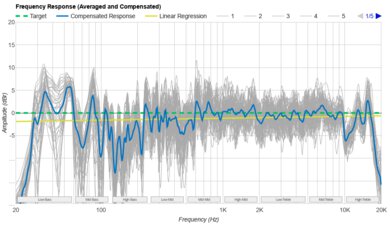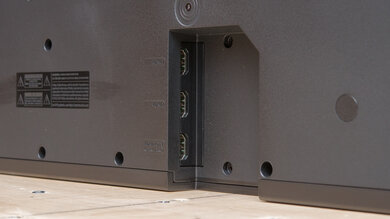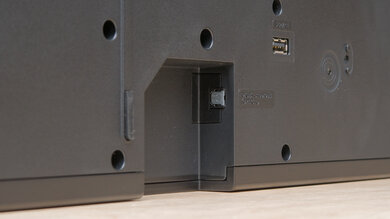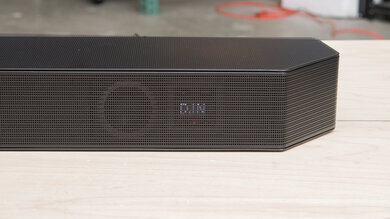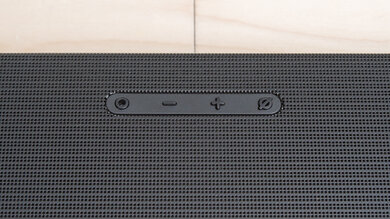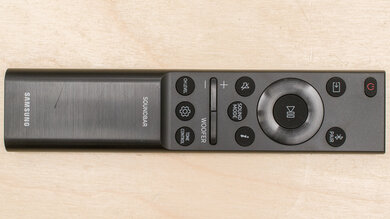The Sony HT-S400 is an entry-level model released as part of Sony's 2022 lineup. It's also available at Costco as the Sony HT-SC40. You'll get built-in support for Sony's S-Force Pro Front Surround technology, which uses psychoacoustic principles to widen the soundstage past the edges of the bar itself, similar to Samsung's Acoustic Beam. There's no Dolby Atmos support to help you enjoy immersive object-based sound common to streaming platforms, though, and you won't find as many features as with Sony's top-of-the-line models.
Our Verdict
The Sony HT-SC40 is okay for mixed usage. It's a simple 2.1 bar that's pretty limited regarding audio format support and sound enhancement tools, so it's best suited for listening to stereo content like music and TV shows. Still, it's a solid upgrade over existing TV speakers, with a clear reproduction of vocals and instruments in your favorite content. The extra emphasis in the high-bass adds some boom to the mix, though it's missing some rumble in the low-bass. Even with its S-Force Pro Front Surround, you still don't get a very immersive feel with surround sound formats like Dolby Digital.
- Gets loud.
- Subwoofer level adjustment.
- Limited sound enhancement features.
- Poor surround sound.
The Sony HT-SC40 is satisfactory for dialogue-focused TV shows and podcasts. With its balanced mids, voices reproduce quite clearly and accurately, and there's even a dialogue enhancement tool called 'Voice' on hand. If you're watching shows at night, you can use the 'Night' tool to balance the volume level between extremes to avoid bothering those around you. There's no center channel, so you don't get the same vocal clarity as with more premium models.
- Dialogue enhancement tool.
- Night mode.
- Limited sound enhancement features.
- No discrete center channel.
The Sony HT-SC40 is fair for music. Its balanced mids offer clear and detailed vocals and lead instruments, making it suitable for listening to most genres. There's also a little extra boom in the upper bass range, so you feel the punch in bass-heavy genres like EDM. Its sub struggles to reproduce lower frequencies, so you don't feel the low bass with the same intensity as other models. Also, there aren't a lot of sound enhancement features on hand.
- Gets loud.
- Subwoofer level adjustment.
- Limited sound enhancement features.
- Lacks low-bass.
The Sony HT-SC40 is mediocre for movies. It supports Dolby Digital, the most common surround sound format found on many different streaming platforms. However, it has to downmix 5.1 surround into stereo to play it, which doesn't sound as immersive. It doesn't support Dolby Atmos or DTS:X, either, so you can't enjoy more immersive object-based formats, which are also quite common on streaming services.
- Gets loud.
- Subwoofer level adjustment.
- No Atmos support.
- Poor surround sound.
Changelog
-
Updated Jan 14, 2025:
The Center box has been updated to mention the Samsung HW-B750D.
- Updated May 28, 2024: Updated Stereo Dynamics results with new methodology from TBU 1.3. Added text to Audio Latency: ARC, and Audio Latency: Optical boxes.
- Updated May 27, 2024: We've converted this review to Test Bench Update 1.3. If applicable, we've retested stereo sound based on the manufacturer's recommendations. Additionally, we've expanded our audio latency tests to the following boxes: Audio Latency: ARC, Audio Latency: HDMI In, and Audio Latency: Optical. You can see the full changelog here.
- Updated Jul 06, 2023: Minor text updates to the review for clarity. No changes in test results.
Check Price
Differences Between Sizes And Variants
This soundbar is available in Black. You can see the label for the model we tested here.
There's also a Costco-exclusive version called the Sony HT-SC40. We expect it to perform similarly to this model.
If you encounter another version of this soundbar, let us know in the forums, and we'll update our review.
Popular Soundbar Comparisons
The Sony HT-S400 is a simple 2.1 soundbar that's ideal for stereo content like music and TV shows. That said, it lacks a lot of enhancement tools, even compared to other budget models, so you don't have a lot of ability to control its sound, and there aren't rear speakers available. It's a solid bar, but for the price, other options like the Vizio V Series V51-H6 offer a lot more.
See our recommendations for the best budget soundbars, the best Sony soundbars, and the best soundbars with subwoofers.
The Sony HT-S400 offers an improved performance over the Sony HT-S100F. Thanks to its subwoofer, the HT-S400 can reproduce more low-bass, and overall, its sound profile is more balanced. Its surround performance is better, too, although the bar still downmixes 5.1 content into stereo. That said, the HT-S100F offers a better phantom center channel performance, and it may even be a better choice if you're very low on space since it doesn't have a subwoofer.
The Sony HT-G700 is better than the Sony HT-S400. The HT-G700 is a 3.1 bar with a discrete center channel to improve vocal clarity. Also, it supports Dolby Atmos content, so you can take advantage of more immersive object-based formats often found on streaming platforms. It's better built, too.
The Samsung HW-Q700A is better than the Sony HT-S400. The Samsung is a 3.1.2 bar, and unlike the 2.1 Sony, it has a discrete center channel to improve vocal clarity. Also, it supports more audio formats, such as Dolby Atmos content. There are more sound enhancement features, too, including a graphic EQ to customize its sound.
The Samsung HW-Q600A is better than the Sony HT-S400. The Samsung is a more versatile 3.1.2 bar, with a discrete center channel to help improve vocal clarity compared to the Sony. Unlike the Sony soundbar, it has Atmos support, meaning you can take advantage of object-based formats found on many different streaming platforms. There are more sound enhancement features, too.
Test Results



